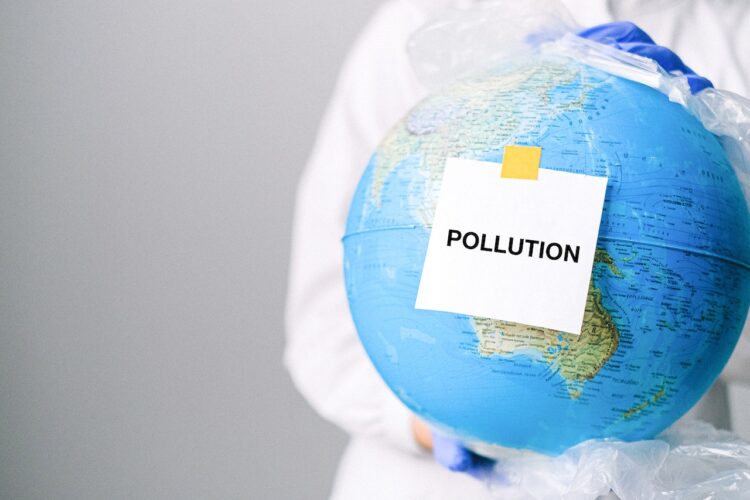In our quest for a sustainable future, understanding the impact of greenhouse gases is paramount. These gases, released into the atmosphere as a result of human activities, have become the driving force behind climate change. In this article, we delve into the intricacies of greenhouse gases, exploring their sources, effects, and the urgent need for collective action to mitigate their impact. Join us as we uncover the truths behind greenhouse gases and explore solutions for a sustainable, climate-resilient future.
Understanding Greenhouse Gases
The phenomenon of greenhouse gases plays a critical role in regulating the Earth’s temperature and maintaining habitable conditions for life. Greenhouse gases trap heat in the atmosphere, creating a natural greenhouse effect. However, human activities have significantly increased the concentrations of these gases, resulting in an enhanced greenhouse effect and accelerated climate change.
Definition and Significance
Greenhouse gases are gases that trap and re-emit heat energy in the Earth’s atmosphere. They include carbon dioxide (CO2), methane (CH4), nitrous oxide (N2O), and fluorinated gases. These gases act like a blanket, allowing sunlight to enter but preventing some of the heat from escaping back into space. This phenomenon is crucial for sustaining life on Earth, as it maintains average global temperatures conducive to various ecosystems.
Common Greenhouse Gases
a. Carbon Dioxide (CO2): Carbon dioxide is the most prominent greenhouse gas, primarily generated from the burning of fossil fuels, deforestation, and industrial processes. The excessive release of CO2 has led to a significant increase in atmospheric concentrations, contributing to global warming and climate change.
b. Methane (CH4): Methane is a potent greenhouse gas, released during the production and transport of coal, oil, and natural gas. It is also emitted by livestock and other agricultural practices, as well as from landfills and wastewater treatment plants. Methane has a higher warming potential compared to CO2, but its atmospheric lifetime is shorter.
c. Nitrous Oxide (N2O): Nitrous oxide is released through agricultural and industrial activities, including the use of nitrogen-based fertilizers and the burning of fossil fuels. It also occurs naturally through microbial processes in soils and oceans. Nitrous oxide has a longer atmospheric lifetime and a significantly higher warming potential than CO2.
Impact of Greenhouse Gases
The increasing concentrations of greenhouse gases in the atmosphere have far-reaching consequences for our climate and ecosystems. The effects of these gases include:
Global Warming and Climate Change: Greenhouse gases trap heat in the atmosphere, leading to a rise in global temperatures. This phenomenon, known as global warming, has resulted in shifts in weather patterns, rising sea levels, melting glaciers, and extreme weather events such as hurricanes and heatwaves.
Ocean Acidification: The absorption of excess carbon dioxide by the oceans has led to increased acidity, known as ocean acidification. This process poses a threat to marine life, including coral reefs, shellfish, and other organisms that rely on calcium carbonate for their shells and skeletons.
Ecosystem Disruption: Changes in temperature and precipitation patterns affect ecosystems, leading to shifts in habitats, species extinction, and disruptions in ecological balance. Ecosystem services, such as water purification, pollination, and climate regulation, are also at risk.
Mitigating the Impact of Greenhouse Gases
Addressing the challenges posed by greenhouse gases requires global cooperation and concerted efforts to reduce emissions and adopt sustainable practices. Here are key strategies for mitigating the impact:
Transition to Clean Energy: Shifting from fossil fuels to renewable energy sources such as solar, wind, and hydropower reduces carbon emissions and dependence on non-renewable resources.
Energy Efficiency and Conservation: Implementing energy-efficient practices in industries, buildings, and transportation can significantly reduce greenhouse gas emissions.
Sustainable Agriculture and Land Use: Promoting sustainable farming practices, such as organic farming, precision agriculture, and agroforestry, can help reduce greenhouse gas emissions from the agriculture sector. Preserving forests and implementing reforestation programs also play a crucial role in sequestering carbon dioxide.
Conclusion
Understanding the impact of greenhouse gases is essential for addressing the climate challenge. By recognizing the sources, effects, and urgency of greenhouse gas emissions, we can collectively work towards reducing our carbon footprint and adopting sustainable practices. Through a global commitment to clean energy, energy efficiency, and sustainable land use, we can mitigate the impact of greenhouse gases and create a sustainable, climate-resilient future for generations to come. Let us embrace the responsibility of preserving our planet and act together to ensure a healthier and more sustainable world.
